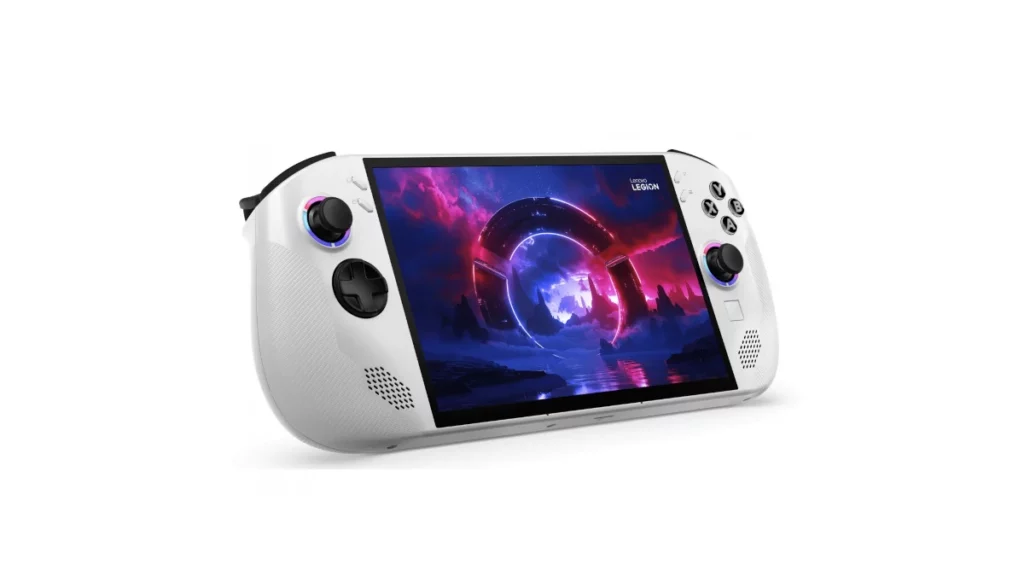Lenovo has entered the handheld gaming market with a compelling alternative to the steam deck and ASUS ROG Ally. The Legion Go S refines its predecessor’s design into a more compact, portable device. However, with multiple configurations—including an anticipated SteamOS model—the Windows version available now raises some important questions. Is it worth the investment, or should you wait for a more refined alternative?
Design and Build Quality: Refinements with Trade-offs
The Legion Go S follows the familiar design language of its predecessor but introduces a few key changes:
- Compact Form Factor: Smaller and lighter than the original Legion Go, making it easier to carry.
- 8-inch Display: A 1920×1200 resolution panel with a 120Hz refresh rate, providing smooth visuals, albeit slightly smaller than the previous 8.8-inch screen.
- Hall Effect Joysticks: Improved durability and accuracy, reducing joystick drift concerns.
- Ergonomic Adjustments: The rear paddles have been replaced with two adjustable trigger depth toggles, a welcome feature for racing and FPS enthusiasts.
- Dual USB-C Ports: Enhanced connectivity for accessories and docking.
However, notable omissions include the removal of detachable controllers and the absence of a fingerprint sensor. This means users must rely on traditional PINs or passwords for authentication, which is less convenient compared to competitors like the ROG Ally X.
Performance: A Step Forward or Backward?
While Lenovo positions the Go S as a streamlined alternative to the original Legion Go, its performance raises some concerns:
- AMD Ryzen Z2 Go processor: A new entry-level chip with 4 cores and 8 threads, compared to the 8-core Ryzen Z1 Extreme in the original Legion Go.
- 32GB RAM: Generous but arguably excessive for this configuration, increasing costs without proportional performance benefits.
- Gaming Benchmarks:
- Cyberpunk 2077 (800p, Medium, FSR Performance Mode): Around 45 FPS (compared to 51 FPS on the original Legion Go).
- Returnal (800p, Medium): 23 FPS (compared to 34 FPS on its predecessor).
Despite adequate cooling and decent thermals, the performance downgrade makes the Windows version less compelling—especially at its current price.

Battery Life: Decent, but Not Class-Leading
Battery life remains a critical factor for handheld gaming:
- 55.5WHr Battery: Smaller than competitors like the ROG Ally X (80WHr), resulting in moderate longevity.
- Real-World Usage:
- Low-demand titles (e.g., Metal Slug Tactics, 15W mode): Approximately 2.5 hours.
- AAA games (Cyberpunk 2077, 30W mode): Around 1.5 hours.
- Power Modes: Customizable settings from 5W to 40W allow users to balance performance and battery life.
While it’s serviceable, the battery performance does not stand out compared to devices with larger power reserves.
Software Experience: Windows 11 Still Feels Clunky
Despite Lenovo’s improvements to its Legion Space app, the software experience remains a mixed bag:
- Better Game Launcher: Legion Space is now more user-friendly and integrates well with multiple game libraries.
- Driver and Update Management: Lenovo has streamlined updates, making system maintenance easier.
- Windows 11 Limitations: Navigation can be cumbersome, requiring frequent switching between joystick, touchpad, and touchscreen input.
- Bugs & Compatibility Issues: Some users have reported problems with game installations, particularly through Legion Space.
This remains a key weakness of Windows-based handhelds compared to SteamOS, which offers a more seamless out-of-the-box experience.
Pricing & Value Proposition: Wait for Better Options
At $730, the Legion Go S faces tough competition:
- Original Legion Go ($700): Offers better performance, detachable controllers, and additional accessories.
- ROG Ally X ($799): Larger battery, better performance, and more refined ergonomics.
- Upcoming SteamOS Version ($500-$600): Likely a more cost-effective choice for users focused on PC gaming.
Unless you need a Windows handheld immediately, waiting for more affordable configurations or the SteamOS variant makes the most sense.
Conclusion: A Solid Handheld with a Questionable Launch Configuration
The lenovo legion go S brings some positive refinements but stumbles in its current form.
Pros:
- Compact and portable design
- 120Hz 8-inch display
- Hall effect joysticks and adjustable triggers
- Dual USB-C ports for better connectivity
- Decent battery life in lower power modes
Cons:
- Weaker performance than its predecessor
- No fingerprint sensor
- Subpar haptics and vibration feedback
- Windows software experience remains clunky
- High price with excessive RAM allocation
Final Verdict: If you are eager for a handheld gaming PC and need Windows, the Legion Go S is an option—but not the best one. Most gamers would be better off waiting for cheaper configurations or the SteamOS version for a smoother, more cost-effective experience.